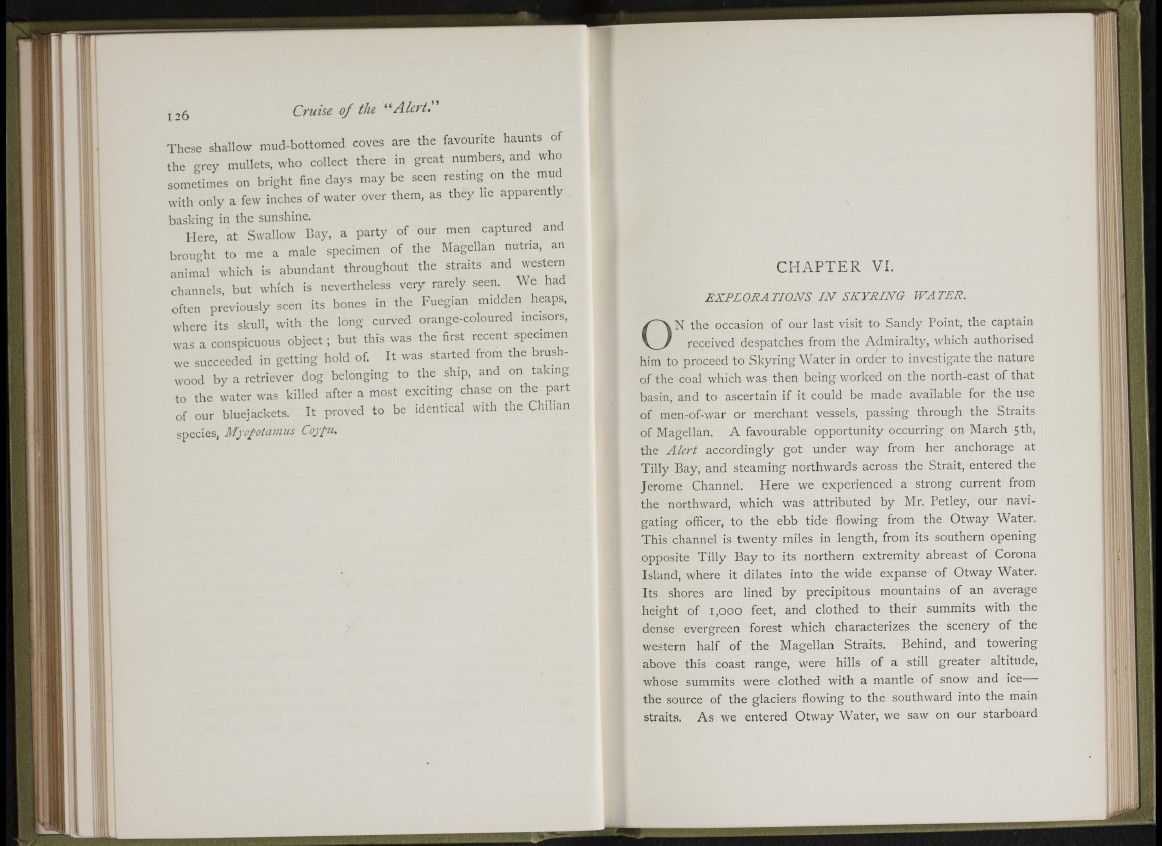
"il
, ’I '
These shallow mud-bottomed coves are the favourite haunts of
the grey mullets, who collect there in great numbers, and who
sometimes on bright fine days may be seen rest.ng on the mud
with only a few inches of water over them, as they he apparently
basking in the sunshine.
Here at Swallow Day. a party of our men captured and
brouoht to me a male specimen ot the Magellan nutria, an
animh which is abundant throughout the straits and western
channels, but which is nevertheless very rarely seen. We had
often previously seen its bones in the Fuegian m.dden heaps.
where its skull, with the long curved orange-coloured incisors,
was a conspicuous object; but this was the first recent specimen
we succeeded in getting hold of. It was started from the brushwood
by a retriever dog belonging to the ship, and on taking
to the wcater was killed after a most exciting chase on the part
of our bluejackets. It proved to be identical with the Chilian
species, Myopotamus Coypu.
CHAPTER VI.
E X P L O R A T IO N S I N S K Y R IN G W A T E R .
,N the occasion of our last visit to Sandy Point, the captain
received despatches from the Admiralty, which authorised
him to proceed to Skyring Water in order to investigate the nature
of the coal which was then being worked on the north-east of that
basin, and to ascertain if it could be made available for the use
of men-of-war or merchant vessels, passing through the Straits
of Magellan. A favourable opportunity occurring on March 5th,
the Alert accordingly got under way from her anchorage at
Tilly Bay, and steaming northwards across the Strait, entered the
Jerome Channel. Here we experienced a strong current from
the northward, which was attributed by Mr. Petley, our navigating
officer, to the ebb tide flowing from the Otway Water.
This channel is twenty miles in length, from its southern opening
opposite Tilly Bay to its northern extremity abreast of Corona
Island, where it dilates into the wide expanse of Otway Water.
Its shores are lined by precipitous mountains of an average
height of 1,000 feet, and clothed to their summits with the
dense evergreen forest which characterizes the scenery of the
western half of the Magellan Straits. Behind, and towering
above this coast range, were hills of a still greater altitude,
whose summits were clothed with a mantle of snow and ice
the source of the glaciers flowing to the southward into the main
straits. As we entered Otway Water, we saw on our starboard
"SiW